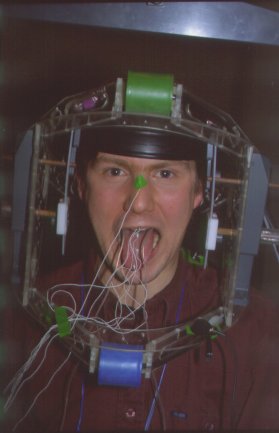RESEARCH
Thesis abstract:
This thesis explores the coarticulatory effects of English /l/ and /r/, examining their articulatory basis, acoustic manifestation and perceptual relevance. It demonstrates that there are perceptually relevant coarticulatory differences associated with the distinction between /l/ and /r/. Two perceptual experiments, an articulatory experiment and a modelling study were conducted. Both perceptual experiments used a modified gating technique. The first experiment demonstrates that the coarticulatory effects of /l/ and /r/ on surrounding vowels and consonants can sometimes be used by listeners to identify an /l/ or /r/ which has been deleted and replaced by noise. The second perceptual experiment shows that the cues for an /r/ are more perceptually salient than those for an /l/. The articulatory experiment used simultaneous electromagnetic articulography, electropalatography and acoustic recordings to investigate the coarticulatory effects of /l/ and /r/. In /r/ contexts, relative to /l/ contexts, raising and retraction of the tongue, lip rounding and lowering of F3 were found, up to two syllables preceding and following the /r/. The extent of this coarticulatory effect is far greater than commonly acknowledged in the coarticulation literature. Phonetic and phonological theories fail to predict or account for effects of this extent. The theory that coarticulation can be modelled as overlap of articulatory gestures was tested in a modelling study. A subset of the articulatory data was modelled numerically using dynamical descriptions of articulatory gestures from an approach developed at Haskins Laboratories. The modelling showed that long-distance coarticulatory effects could not be adequately accounted for by gestural overlap alone. Feature-spreading models, such as Keating's window model of coarticulation, are also unable to account for these effects adequately. The results of this thesis pose a challenge to current phonetic and phonological theory, as they show that coarticulatory effects have greater extent than commonly recognised.
A copy of the thesis can be requested from the Oxford University Phonetics Laboratory.
Articulatory Research
The production study employed electromagnetic articulography (EMA), in which electromagnetic fields are used to track the position of coils placed on a subject’s tongue during speech and thus measure vocal tract movement. I also used electropalatography (EPG) which measures tongue palate contact.
Click on the graphic for more information about the techniques, and an example.
|

|
